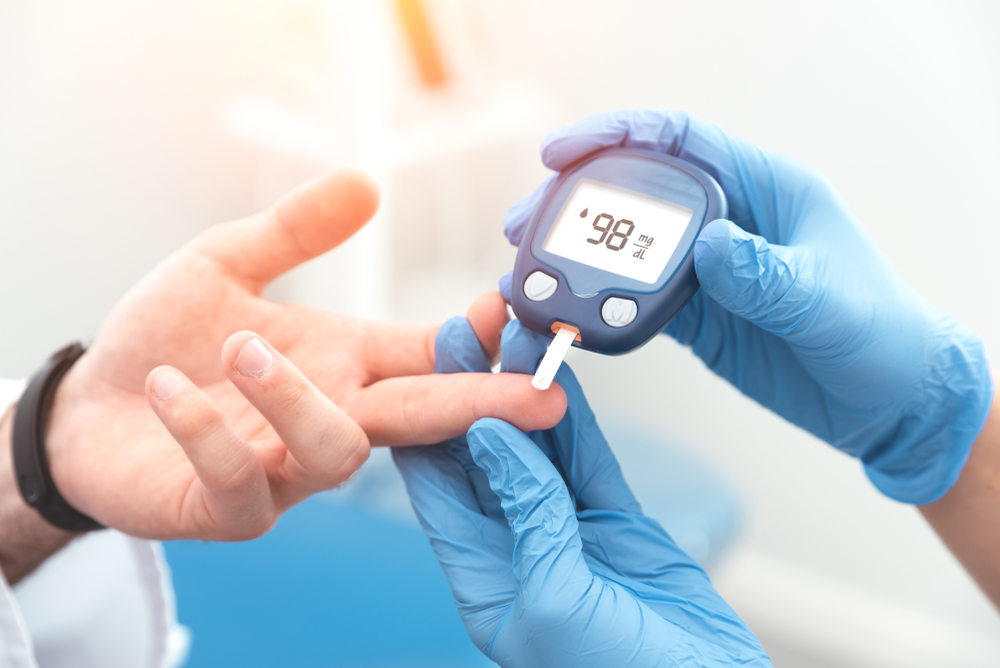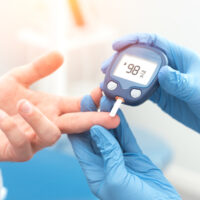Blood pressure is the force exerted by circulating blood against the wall of the body’s arteries which are the blood vessels that carry oxygenated blood from one’s heart to different parts of the body. The pressure is believed to depend on the blood vessels’ resistance and how hard the heart has to pump. Hypertension or High blood pressure is a chronic condition wherein the arterial blood pressure is persistently elevated. Elevated blood pressure is a primary risk factor for cardiovascular disease, including stroke, heart attack, heart failure, and aneurysm. It is a major cause of premature death globally.
A recent global study conducted between 1990 to 2019 for 200 countries revealed that Hypertension has doubled from 331 million women and 317 million men in 1990 to 626 million women and 652 million men in 2019 for people aged between 30-79 years. Globally, 59% of women and 49% of men with hypertension reported a previous diagnosis of hypertension in 2019, and 47% of women and 38% of men were treated. This suggests nearly half of these people were unaware that they had hypertension.
What is the normal blood pressure range?
Blood Pressure (BP) Range is recorded in 2 measurements: Systolic and diastolic pressure.
- Systolic pressure: It is the pressure exerted when blood is ejected into arteries. In other terms, it is the force at which one’s heart pumps blood. It is considered the higher number. Normal systolic pressure is 120mmHg or below.
- Diastolic pressure: It is the pressure blood exerts within arteries between heartbeats. In other words, it is the resistance to the blood flow within the blood vessels. It is considered the lower number. Normal diastolic pressure is 80mmHg or below.
| Blood Pressure | Systolic (mmHg) | Diastolic (mmHg) | |
| Normal | <120 | and | <80 |
| Elevated | 120-129 | and | <80 |
| High Blood Pressure (Stage 1) | 130-39 | or | 80-89 |
| High Blood Pressure (Stage 2) | 140 or higher | or | 90 or higher |
| Hypertensive Crisis (seek emergency care) | >180 | and/or | >120 |
What is the hypertension range?
A range over 140/90mmHg is considered to be a high blood pressure range. An ideal range of blood pressure has to be around 120/80 mmHg.
Symptoms of Hypertension
Hypertension is generally called a “silent killer”, as most people are unaware of having it because it might not be symptomatic. They can be nosebleeds, early morning headaches, irregular heart rhythms, vision changes, and buzzing in the ears when symptoms occur. High hypertension can cause fatigue, nausea, dizziness, visual disturbance, facial flushing, vomiting, confusion, chest pain, anxiety, and muscle tremors. Regular checking of blood pressure can detect any abnormalities in the range.
Types of Hypertension
- Primary
The most common form in adults is also known as essential hypertension and does not have a known cause. However, genes, diet, lifestyle factors (like smoking, drinking, inadequate gym and exercise, stress), and age could predispose primary hypertension factors.
- Secondary
This is the form of hypertension when the underlying cause is identifiable and potentially reversible on treating the cause. It occurs in about 5-10% of cases. Some common reasons are:
- Narrowing of the arteries that supply blood to kidneys.
- Gland disease like adrenal gland disease
- Side effects of some medications like birth control pills, antidepressants, etc.
- Thyroid hormone abnormalities
- Constriction of the aorta is the major blood vessel carrying blood out of one’s heart to the body.
Causes & Risk Factors
The cause of primary hypertension is not particular. However, secondary hypertension has specific causes and is mostly a complication of underlying health problems. Conditions that could lead to hypertension are:
- Diabetes
- Kidney diseases
- Hyperthyroidism
- Sleep apnoea
- Obesity
- Cushing syndrome caused by corticosteroid drugs
Risk factors that contribute to the development of hypertension are:
Modifiable risk factors include –
- Unhealthy dietary habits: A diet high in salt, saturated fats and trans fats while low in fruits & vegetables.
- Physical inactivity
- Excess use of alcohol/tobacco
- Obesity
Non-modifiable risk factors include –
- Age: Blood pressure is found to increase with age as the arteries stiffen/narrow steadily. Thus, hypertension is more common in people over 60 years of age.
- Ethnicity: African Americans are at higher risk
- Increases the risk of having hypertension.
- Gender: Males are more prone to hypertension than females
Complications of Hypertension
Long-term hypertension can cause excess pressure that hardens arteries, decreasing the blood flow and reducing oxygen supply to the tissues. This results in complications like:
- Angina, commonly known as chest pain
- Heart attack: blood supply to the heart is blocked, and heart muscle cells die from lack of oxygen.
- Heart failure: occurs when the heart cannot pump enough blood
- An irregular heartbeat that could lead to sudden death
- Kidney failure
- Aneurysm: the abnormal bulge of the arterial wall that could burst at any point in time
- Stroke: due to blockage of arteries in the brain that result in reduced blood supply
- Amputation: due to lack of blood supply to the limbs
- Retinopathy: that could lead to blindness
How to check Hypertension at home?
A digital blood pressure monitoring machine is available these days to regularly check the blood pressure levels at home. It consists of a cuff that needs to be wrapped around your arm, and reading will be shown on the monitor when you turn on the machine.
Diagnosis by doctor
A Sphygmomanometer (a traditional BP monitor) is used for routine blood pressure checkups in any doctor’s office. The BP is recorded manually by a nurse. If there is a persistent rise in BP, the doctor will conduct more tests to rule underlying diseases like cholesterol screening, ECG, etc.
Treatment
Medications that are commonly used to treat hypertension are:
- Beta-blockers: To make one’s heartbeat slower and with less force. This reduces the amount of blood being pumped through arteries which lower blood pressure.
- Diuretics: Also called water pills, help kidneys remove excess sodium from the body. As the sodium leaves, excess fluid also moves into the urine, thereby reducing the blood pressure.
- ACE inhibitors: Angiotensin-converting enzyme inhibitors prevent the body from producing excess angiotensin, a chemical that causes blood vessels & artery walls to tighten and narrow. This in turn helps blood vessels relax and reduce blood pressure.
- Calcium channel blockers: Block calcium from entering cardiac muscles helping in less forceful heartbeats & lower blood pressure.
- Alpha-blockers: Helps blood vessels relax, in turn reducing blood pressure.
Prevention
Lifestyle changes include increasing physical activity of at least 150 mins of moderate exercise like jogging and gym, maintaining an optimal weight, reducing stress and anxiety, quitting smoking and limiting alcohol, reducing sodium and fat intake and getting enough sleep of 7-8 hours can all help prevent hypertension.
Diet includes a heart-healthy diet that emphasizes consuming more fruits, vegetables, whole grains, and lean protein like fish.
FAQ
The blood pressure response to caffeine differs in individuals. A short dramatic increase in blood pressure is seen when the caffeine is intaken. Some regular coffee drinkers have hypertension, while others develop a tolerance to caffeine over a long period.
Yes, a headache is a symptom of a very high blood pressure.
An unhealthy diet can put one at risk for developing hypertension like:
- High salt/sodium intake: High sodium intake alters the fluid balance in the body. The American Heart Association recommends no more than 2,300mg of sodium intake daily, equivalent to 1 tablespoon of salt. Most junk foods, like pizza, fries, and fast food, have high salt content.
- Deli meat: Processed Deli meats have high sodium content in them.
- Pickles: High amount of salt is used in the pickles for preserving them.
- Canned soups and tomato products: Packaged soups, tomato sauces, and pasta sauces have high sodium content. It is better to consume fresh homemade soups and sauces with low amounts of salt.
- Sugar: High consumption of sugar indirectly contributes to obesity, which would be a risk factor for developing hypertension.
- Trans or saturated fats are mostly found in animal products like full-fat milk and cream, butter, red meat, and chicken skin. It is better to avoid them for a healthy heart.
- Alcohol: High intake indirectly increases the risk of high blood pressure as many alcoholic drinks are high in sugar and calories.
Very high blood pressure can be dangerous for both the mother and the infant if not diagnosed and managed well during pregnancy. The condition is called Gestational Hypertension and usually reverses itself after childbirth. However, if not managed well, complications include Preeclampsia which causes complications of kidney functioning resulting in high protein levels in urine, problems with liver function, fluid accumulation in lungs, or visual problems in pregnant women. It could also lead to eclampsia which causes seizures. Complications in infants could be low birth weight, early birth, or stillbirth.
- 1WHO
- 2Medical News Today
- 3HKSAR Department of Health
- 4NHS
- 5Verywell Health
- 6WebMD
- 7Healthline
- 8Mayo Clinic
- 9The Lancet

